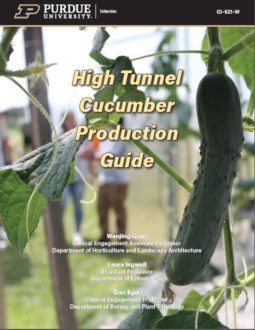High tunnels, also called hoop houses, are a form of protected agriculture. The plastic-covered structure blocks rain, snow, and strong wind that crops are exposed to when growing in the open field. High tunnels attract heat that allows crops to be planted earlier and harvested longer. However, compared with greenhouses that are typically equipped with active heating and cooling and often supplemental lighting systems, high tunnels have a limited capability to maintain environmental conditions at the crop optimum range. Heating and cooling of high tunnel structures rely on passive measures: closing and opening of the sidewalls and/or gable vents. Thus, high tunnels are a more open environment compared to greenhouses, resulting in unique growing conditions.
Over the past 20 years, high tunnels have become increasingly popular as a season extension tool for small farmers. Seedless cucumber is one of the most popular crops grown in high tunnels. The climbing growth habit, parthenocarpic nature of setting fruit without pollination, high yield potential and long harvest window make seedless cucumber an ideal crop for high tunnel production.
This Purdue Extension cucumber production guide provides resources and recommendations tailored to the distinctive growing environment of high tunnels.
Want more information? See the related SARE grant:
